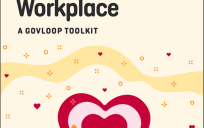“Son, we live in a world that has walls, and those walls have to be guarded by men with guns. Who’s gonna do it? You? You, Lieutenant Weinberg? I have a greater responsibility than you can possibly fathom.”– Colonel Jessup in the movie A Few Good Men
 Organizations that choose to deploy collaborative solutions, ranging from Twitter to Facebook to full-blown community software, are making a decision that it is time to engage their customers, their citizens, in a bi-directional dialog. This dialog is not for dialogs sake alone, it is meant to deliver a return on investment. For businesses, this should lead to higher profits. For local governments and federal agencies it should lead to better delivery of services. For politicians it should lead to winning an election.
Organizations that choose to deploy collaborative solutions, ranging from Twitter to Facebook to full-blown community software, are making a decision that it is time to engage their customers, their citizens, in a bi-directional dialog. This dialog is not for dialogs sake alone, it is meant to deliver a return on investment. For businesses, this should lead to higher profits. For local governments and federal agencies it should lead to better delivery of services. For politicians it should lead to winning an election.
However, some organizations do not seem to fully understand what they are signing up for and choose to clamp down, to guard those walls and treat their customers, their citizens, as the enemy, keeping them at a safe and comfortable distance. It was with disappointment that I read about the Social Media Policy in use by the city of Charlotte, NC. Charlotte has a Facebook fan page where citizens are allowed to leave comments but only city employees can view those comments, not other citizens.
While other large cities in the area, as well as North Carolina itself, have an open policy Charlotte stands alone, fearing lawsuits that might arise from inappropriate posts. While I respect the concern, I feel strongly that the move is the wrong one.
If you want to leverage Social Business Strategies remember:
- Define clear guidelines, a clear Social Media Policy, for employees.
- Define accepted use policies for your customers/citizens. Instead of blocking access to comments clearly state what is acceptable. In the case of questionable wall posts, if you fear deleting them create an area, maybe within a discussion board, where questionable wall posts are moved. This enables citizens to exercise their right to free speech without allowing offensive comments to side track your goals.
- If you do not wish to publish citizen feedback through social channels then stick to making your web site and your feedback forms the best they can be. Each social channel has its own social norms and expectations. If you do not wish to work within this framework, consider other channels.
What do you think? Is Charlotte doing the right thing?
John




Harlan, great response, appreciate the counter viewpoint. While I disagree with your response I 100% love your use of the rest of the Jessup speech. 🙂
Anyway, my point is simply that beginning down this path in the manner they are choosing leads to citizens being suspicious, what is Charlotte hiding. It is likely that they are purely being cautious. If that is the case, start off small, avoid Facebook as anything but a push channel and simply continue taking e-mails.
Once you begin down the pathway of “transparency” and begin using social strategies and social media tactics and tools you enter a new world of expected behaviors. If you are not willing to play along, don’t get in the game.
John
I read your posts and comments. Very interesting.
I am looking for some advice “from the field” on how to set up a social network activity for a small municipality. Please contact me for sharing experiences, advices and suggestions.
Thanks to all!
While not a small municipality you should reach out to Chris Moore, CIO for the City of Edmonton Canada. Chris is doing great work there.
I believe that the concept of right or wrong in the social media space is difficult to nail down. The nature of the beast is that it adapts to the people employing and engaging it.
As with markets, I like to look for trends & withhold judgment on any snapshot in time. Snapshots don’t tell the whole story.
I don’t know what’s going on down in Charlotte, but it appears that they are wrestling with the Trust issue. Who among us hasn’t had to face (and is probably still facing) that issue?
I’d give Charlotte kudos for explicitly engaging social media at all, then I’d encourage them to explore the value proposition of using the tool as part of their strategy to achieve some outcome.
I suspect that as they get more comfortable with themselves and the medium, that their policy will evolve.
Maybe I am going to tell something really too obvious.
Talking with civil servants I perceived a sort of barrier in spending time doing some works on the web\socialmedia. In other words they could perceive the introduction of social media as a new task to be accomplished on voluntary base – no rewarding-.
This could be a true constraint, as we all know the web implies working on content, and sometimes this is not considered as a value. (This is what I am experiencing in my job as information architect and content developer).
Is there any chance to raise awareness on this issue?
I will have a look at the City of Edmonton, thanks!
Elena, also check out the work being done in City of Manor (Texas) via people like Dustin Haisler. Some people “get it”, some do not, at least not yet.
I’m sure Charlotte’s actions are likely highly fought-for baby steps that came out of a lot of meetings, and represent the best compromise available at the time. On the outside, it’s woefully lacking compared to the rest of social media usage, but for Charlotte, maybe it was a clear win and a step toward more if it goes well. (I’m a native Charlottean, but don’t live there now.)
I am checking also City of Manor and GovFresh web site.
I am asking myself whether all these experiences could be applicable to a small municipality.
How much effort (human and economic resources) would be required?
Another idea is to raise awareness on gov 2.0 in my country, but “making” things and not “talking” about things.
Well, anyone can start their own “City of Charlotte” fan page and allow people to freely comment. In fact, I think some people already did that…
Great commentary flowing on this topic, commentary that I personally appreciate hearing and learning from. Mark H, thanks for the heads up, going to go take a look for that page.
I add one more issue.
Is a civil servant allowed to reply to a citizen?
In my country this could not be possible, I suppose. Normally there are strict procedures for the interaction with the population.
But maybe this could lead to a citizen-based socialmedia management – proactive citizenship – that, in some cases, could push the public administration to take part to the discussion.
Precise question. I guess a lot of website upgrades out there (in the name of web 2.0) are nothing but new methods of shoveling one sided information. For example @WhiteHouse on Twitter does nothing but tweet about what it is doing lately. The blog does the same job too. There is hardly any difference from past when they blabbered the same stuff on TV.
Web 2.0 in Gov 2.0 has to be inclusive and accommodative in both ways. As rightly pointed out John, there is a lot of energy out there gloated and direction-less. But then how long?
Cheers,
Arvind
CEO BubbleIdeas
The majority of cases I have seen start out with organizations (public and private sectors) using social media channels as one-way push mechanisms (althought without the filtering being done in Charlotte). Consumers (customers,citizens) of the information almost always “drive” the organizations to begin responding although it may take some time.
My belief is that “government 2.0” efforts are proceeding well,in general,but we will not see major changes overnight. Instead, it is likely that we will see a slow evolution,in pockets, over the course of the next dozen or so years. Be patient, it is happening.
John